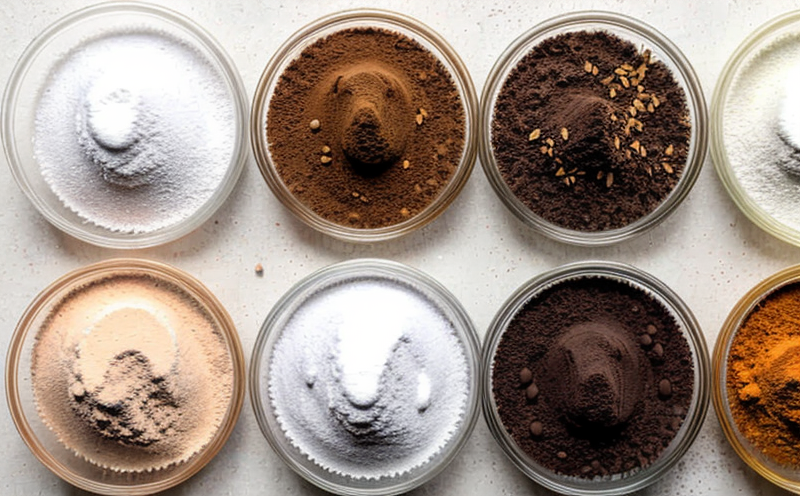ISO 11028 Xylitol Quantification in Sugar-Free Foods
The ISO 11028 standard provides a precise method for determining the quantification of xylitol, an important sugar substitute used in various sugar-free products. This service is critical for ensuring the accuracy and consistency of sweetener content in products aimed at health-conscious consumers or those with dietary restrictions.
Xylitol, also known as xylose, is a five-carbon alcohol that serves as a natural sweetener. It is commonly found in plants such as birch trees and berries, but it can also be produced synthetically for use in food products. The demand for xylitol has grown significantly due to its health benefits over other sugars, including reduced tooth decay risk.
Compliance with ISO 11028 is essential for manufacturers of sugar-free foods to ensure that the product labels are accurate and truthful. This service ensures that companies can confidently meet regulatory requirements and build consumer trust by providing reliable quantification results.
The testing process involves a series of steps, including sample preparation, derivatization (if necessary), extraction, and analysis using high-performance liquid chromatography (HPLC) or gas chromatography with mass spectrometry (GC-MS). The method's precision ensures that even trace amounts of xylitol can be detected accurately.
The standard also specifies the acceptance criteria for the quantification results. Results outside these limits may indicate issues in sample preparation, calibration, or other aspects of the testing process. By adhering to these criteria, laboratories ensure that their clients receive reliable and accurate test results.
Understanding xylitol's role in sugar-free products is crucial for this service. Xylitol not only provides sweetness but also offers health benefits such as reducing dental caries risk. Its use in sugar-free products allows consumers to enjoy sweet treats without the adverse effects of traditional sugars. This makes xylitol particularly important in sectors like pharmaceuticals, nutrition supplements, and diabetic-friendly foods.
The quantification method ensures that xylitol content is consistent across batches, which is vital for maintaining product quality and consumer satisfaction. For R&D engineers, this service provides a reliable tool to optimize formulations and ensure compliance with international standards. Quality managers and procurement officers can use the results to verify supplier claims and maintain regulatory compliance.
By leveraging ISO 11028, companies can enhance their reputation for producing high-quality products that meet or exceed industry expectations. This service helps in maintaining brand integrity and customer trust, which are essential in today's competitive market.
Benefits
The benefits of adhering to ISO 11028 for xylitol quantification extend beyond mere compliance; they contribute significantly to the quality and reputation of your product. Here are some key advantages:
- Enhanced Product Quality: Accurate quantification ensures that each batch of sugar-free products contains the correct amount of xylitol, leading to consistent taste and texture.
- Regulatory Compliance: By using this standard method, you can ensure that your products meet all relevant regulatory requirements, avoiding potential legal issues.
- Customer Trust: Consumers are more likely to trust products that are consistently produced according to recognized standards. This builds a loyal customer base.
- Innovation Support: R&D engineers can rely on this service to develop new formulations and optimize existing ones, ensuring they meet the highest quality standards.
The use of ISO 11028 ensures that your products are not only compliant with regulations but also consistently high in quality. This is a crucial factor for maintaining a strong brand reputation and customer trust.
Why Choose This Test
Selecting the ISO 11028 method for xylitol quantification offers several compelling reasons that set it apart from other testing methods:
- International Recognition: The ISO standard is widely recognized and accepted globally, ensuring consistency in results regardless of where the tests are conducted.
- Proven Accuracy: This method has been rigorously validated and proven to provide accurate quantification results for xylitol in various sugar-free products.
- Comprehensive Guidance: The standard provides detailed instructions on sample preparation, calibration procedures, and analysis techniques, minimizing the risk of errors.
- Regulatory Compliance: By using this method, you ensure that your products comply with international regulations, avoiding potential legal issues.
- Brand Integrity: Consistent adherence to recognized standards enhances brand integrity and consumer trust, which are critical for long-term success.
The ISO 11028 standard is the gold standard in xylitol quantification. By choosing this test method, you ensure that your products meet the highest quality and regulatory standards, setting a benchmark for excellence in the industry.
Use Cases and Application Examples
| Product Type | Application Example |
|---|---|
| Dental Hygiene Products | Evaluating xylitol content in chewing gums used to reduce dental caries risk. |
| Nutrition Supplements | Measuring the amount of xylitol added to dietary supplements for diabetics. |
| Beverages | Determining the xylitol concentration in sugar-free soft drinks and teas. |
| Candy and Confectionery | Quantifying xylitol in hard candies and lollipops for a healthier alternative sweetener. |
| Bakery Products | Evaluating the addition of xylitol to sugar-free breads and pastries for extended shelf life. |
| Sample Preparation Steps | Description |
|---|---|
| Sieving | Ensure that the sample is free from large particles and debris, which could interfere with the analysis. |
| Derivatization (if required) | This step converts xylitol into a more stable form for easier detection by HPLC or GC-MS. |
| Extraction | The sample is extracted to release the xylitol from its matrix, ensuring accurate quantification. |
The use of ISO 11028 in various applications highlights its versatility and importance. Whether you are developing new products or ensuring quality consistency, this method provides a reliable tool for achieving your goals.





